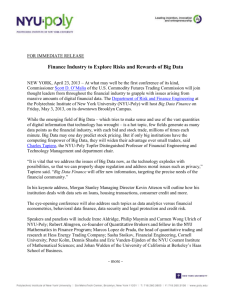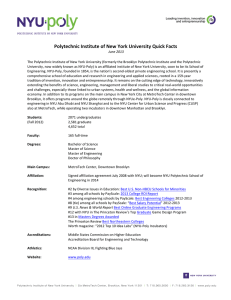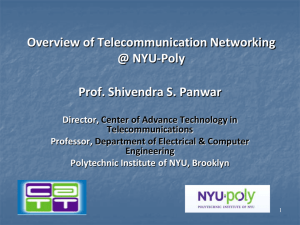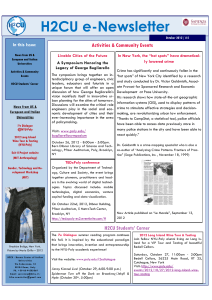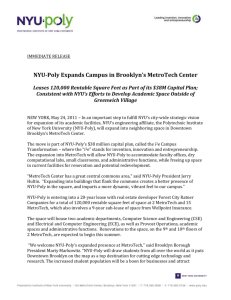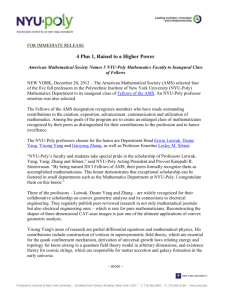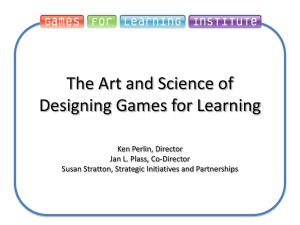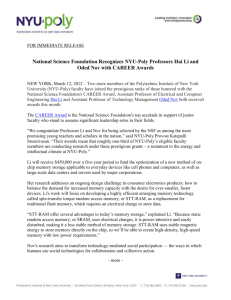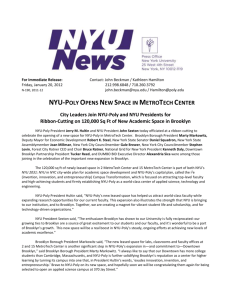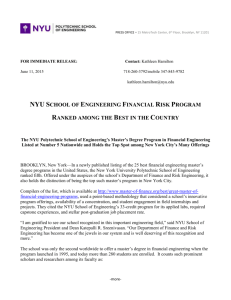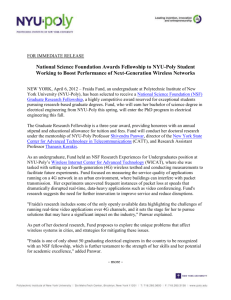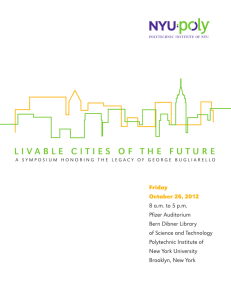- NYU Tandon School of Engineering
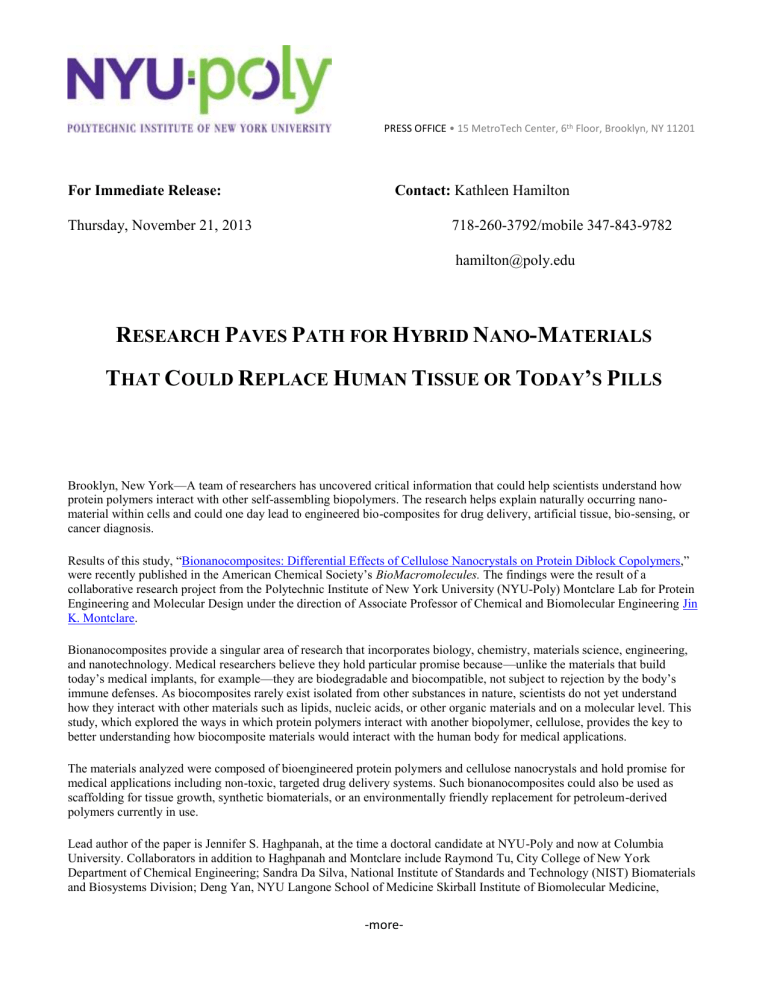
PRESS OFFICE • 15 MetroTech Center, 6 th Floor, Brooklyn, NY 11201
For Immediate Release: Contact:
Kathleen Hamilton
Thursday, November 21, 2013 718-260-3792/mobile 347-843-9782
hamilton@poly.edu
R
ESEARCH
P
AVES
P
ATH FOR
H
YBRID
N
ANO
-M
ATERIALS
T
HAT
C
OULD
R
EPLACE
H
UMAN
T
ISSUE OR
T
ODAY
’
S
P
ILLS
Brooklyn, New York—A team of researchers has uncovered critical information that could help scientists understand how protein polymers interact with other self-assembling biopolymers. The research helps explain naturally occurring nanomaterial within cells and could one day lead to engineered bio-composites for drug delivery, artificial tissue, bio-sensing, or cancer diagnosis.
Results of this study, “ Bionanocomposites: Differential Effects of Cellulose Nanocrystals on Protein Diblock Copolymers ,” were recently published in the American Chemical Society’s BioMacromolecules. The findings were the result of a collaborative research project from the Polytechnic Institute of New York University (NYU-Poly) Montclare Lab for Protein
Engineering and Molecular Design under the direction of Associate Professor of Chemical and Biomolecular Engineering Jin
K. Montclare .
Bionanocomposites provide a singular area of research that incorporates biology, chemistry, materials science, engineering, and nanotechnology. Medical researchers believe they hold particular promise because—unlike the materials that build today’s medical implants, for example—they are biodegradable and biocompatible, not subject to rejection by the body’s immune defenses. As biocomposites rarely exist isolated from other substances in nature, scientists do not yet understand how they interact with other materials such as lipids, nucleic acids, or other organic materials and on a molecular level. This study, which explored the ways in which protein polymers interact with another biopolymer, cellulose, provides the key to better understanding how biocomposite materials would interact with the human body for medical applications.
The materials analyzed were composed of bioengineered protein polymers and cellulose nanocrystals and hold promise for medical applications including non-toxic, targeted drug delivery systems. Such bionanocomposites could also be used as scaffolding for tissue growth, synthetic biomaterials, or an environmentally friendly replacement for petroleum-derived polymers currently in use.
Lead author of the paper is Jennifer S. Haghpanah, at the time a doctoral candidate at NYU-Poly and now at Columbia
University. Collaborators in addition to Haghpanah and Montclare include Raymond Tu, City College of New York
Department of Chemical Engineering; Sandra Da Silva, National Institute of Standards and Technology (NIST) Biomaterials and Biosystems Division; Deng Yan, NYU Langone School of Medicine Skirball Institute of Biomolecular Medicine,
-more-
Microscopy Core Facilities; Silvana Mueller, Christoph Weder, and E. Johan Foster, all of the University of Fribourg
Adolphe Merkle Institute; and Iulia Sacui and Jeffery W. Gilman, NIST Materials Science and Engineering Division.
Research in the Montclare Lab explores engineering macromolecules that will assist in applications such as tissue engineering, drug-delivery, imaging, and energy, with the long-term goal of being able to predictably design or engineer artificial therapeutics, biocatalysts, scaffolds, and cells.
This research was funded in part by the National Science Foundation, the Society of Plastics Engineers, the Swiss National
Science Foundation, and the Adolphe-Merkle Foundation.
The Polytechnic Institute of New York University (formerly the Brooklyn Polytechnic Institute and the Polytechnic University, now widely known as NYU-Poly) is an affiliated institute of New York University, and will become its School of Engineering in
January 2014. NYU-Poly, founded in 1854, is the nation’s second-oldest private engineering school. It is presently a comprehensive school of education and research in engineering and applied sciences, rooted in a 159-year tradition of invention, innovation and entrepreneurship. It remains on the cutting edge of technology, innovatively extending the benefits of science, engineering, management and liberal studies to critical real-world opportunities and challenges, especially those linked to urban systems, health and wellness, and the global information economy. In addition to its programs on the main campus in New York City at MetroTech Center in downtown Brooklyn, it offers programs around the globe remotely through NYUe-Poly. NYU-Poly is closely connected to engineering in NYU Abu Dhabi and NYU Shanghai and to the NYU Center for Urban Science and Progress (CUSP) also at MetroTech, while operating two incubators in downtown
Manhattan and Brooklyn. For more information, visit www.poly.edu
.
